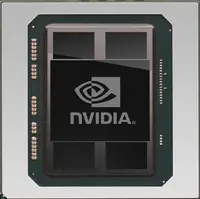(→CoWoS-2) |
|||
| Line 12: | Line 12: | ||
=== CoWoS-2 === | === CoWoS-2 === | ||
| − | Second- | + | Second-generation of CoWoS increased the interposer size considerably through [[mask stitching]]. Originally qualified for 1200 mm², TSMC has since increased the interposer size to 1,700 mm². Those large packages are referred to as CoWoS-XL2. |
| + | |||
| + | ==== Examples ==== | ||
| + | <div> | ||
| + | '''Nvidia Pascal P100:''' | ||
| + | <div style="float: left;">[[File:nvidia p100.png|200px]]</div> | ||
| + | <div style="float: left;">[[File:nvidia pascal p100.jpg|700px]]</div> | ||
| + | </div> | ||
Revision as of 23:37, 16 January 2019
| Packaging | |
 | |
| Technologies | |
| Concepts | |
| Single-Row | |
| Dual-Row | |
| Quad-Row | |
| Grid Array | |
| 2.5D IC | |
| 3D IC | |
Chip-on-Wafer-on-Substrate (CoWoS) is a two-point-five dimensional integrated circuit (2.5D IC) through-silicon via (TSV) interposer-based packaging technology designed by TSMC.
Overview
CoWoS is a wafer-level multi-chip packaging technology that incorporates multiple chiplets side-by-side on a silicon interposer in order to achieve better interconnect density and performance. The chiplets are bonded through micro-bumps on a silicon interposer forming a chip-on-wafer (CoW). The CoW is then subsequently thinned such that the TSV perforations are exposed. This is followed C4 bumps formation and singulation. A CoWoS package is completed thrugh bonding to a package substrate.
Versions
TSMC has introduced a number of versions since they first introduced the technology in 2012.
CoWoS-1
First-generation CoWoS were primarily used for large FPGAs. CoWoS-1 had an interposer die area of up to ~800 mm², very close to reticle limit
CoWoS-2
Second-generation of CoWoS increased the interposer size considerably through mask stitching. Originally qualified for 1200 mm², TSMC has since increased the interposer size to 1,700 mm². Those large packages are referred to as CoWoS-XL2.

